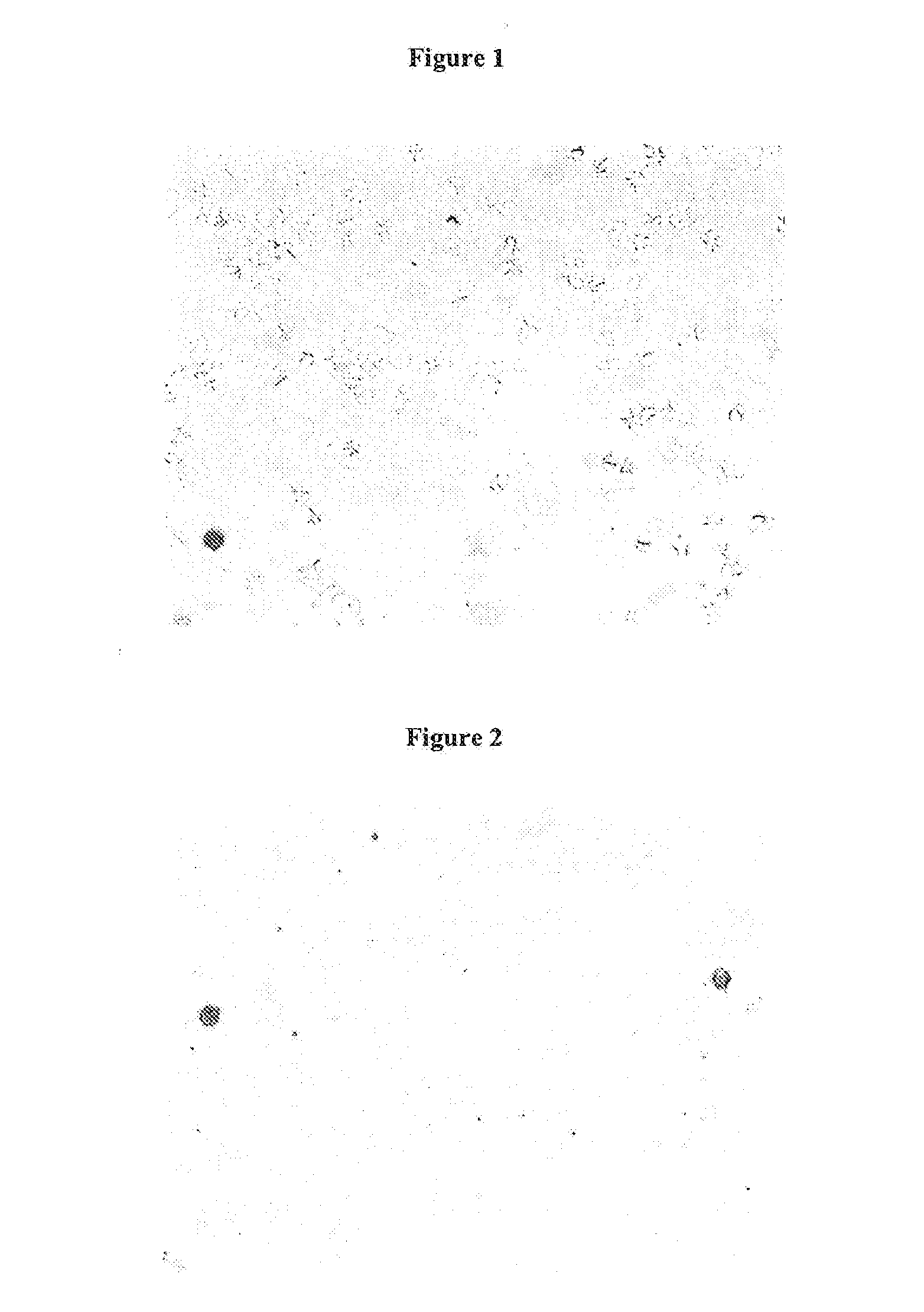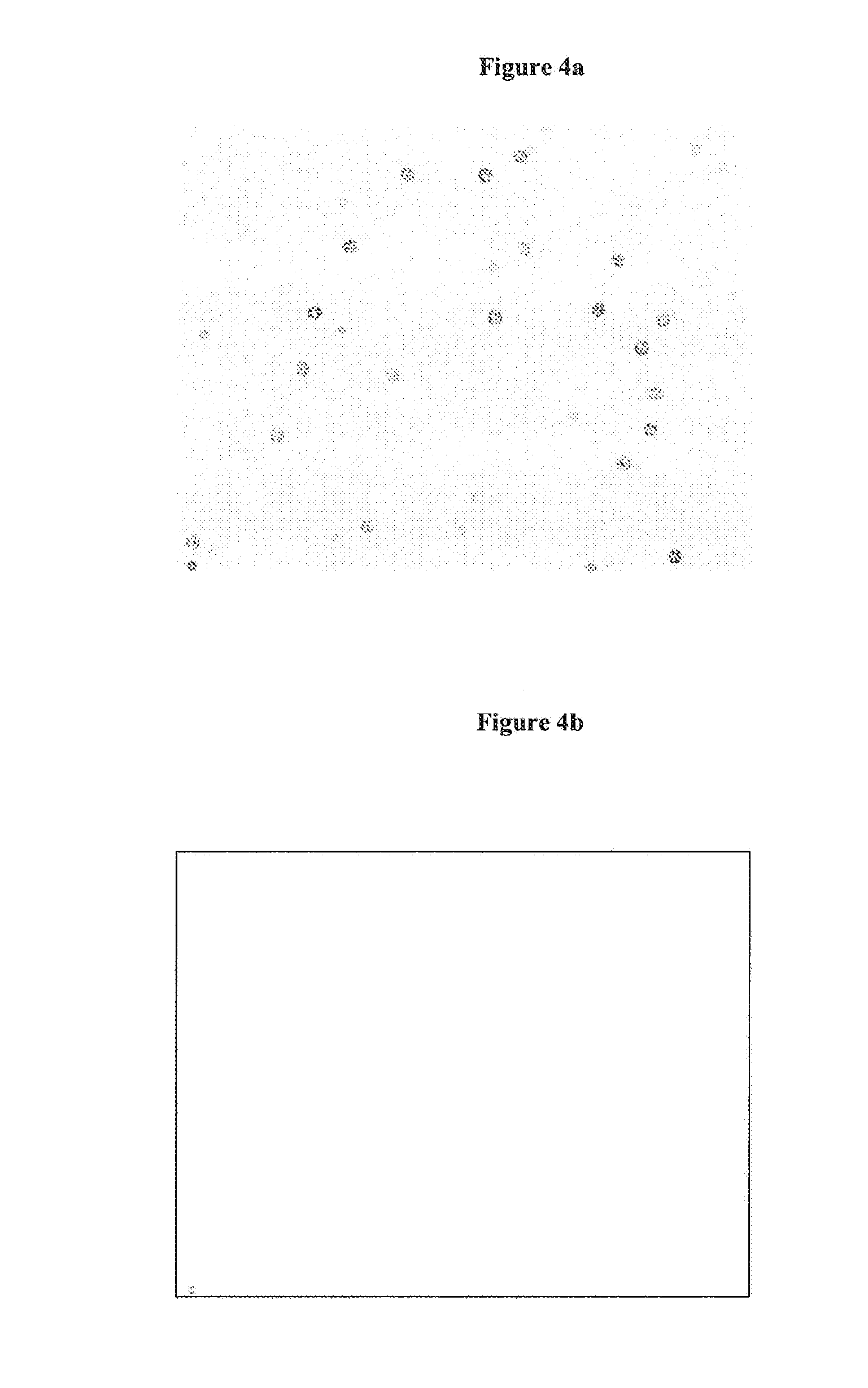Differential hemolysis of a whole blood sample
a whole blood sample and hemolysis technology, applied in the field of detecting analyte, can solve the problems of less stable whole blood, more difficult analysis of target analyte, and more difficult handling of whole blood samples
- Summary
- Abstract
- Description
- Claims
- Application Information
AI Technical Summary
Problems solved by technology
Method used
Image
Examples
example 1
Evaluation of Various Candidate Hemolysis Reagents
example 1.1
Visual Evaluation of Hemolysis
[0111]Solution A: Fresh EDTA-stabilized whole blood is diluted with 0.15 molar sodium chloride solution in the ratio 1:10 (50 μL EDTA-blood plus 450 μL sodium chloride solution).
[0112]Solution B: A solution of the candidate hemolysis reagent in 0.15 molar sodium chloride is prepared wherein the concentration of the hemolysis reagent is twice as high as the desired final concentration in the hemolysate, e.g. to get a final concentration of 25% of 1-Butyl-4-methylpyridinium tetrafluoroborate a solution of 50% (50 mg salt plus 50 mL 0.1.5 molar sodium chloride in water) is prepared.
[0113]In the case of the addition of a second compound, e.g. potassium iodide (1-Butyl-3-methyl pyridiniumchloride / KJ) the stated salt is added in an approximately equimolar amount.
[0114]Hemolysate is prepared by mixing solution A and B in equal volumes, e.g. 500 μL solution A plus 500 μL solution B.
[0115]After mixing the hemolysate is inspected visually for turbidometry and cle...
example 1.2
Microscopic Evaluation of Hemolysis
[0117]Solution A: Fresh EDTA-stabilized whole blood is diluted with 0.15 molar sodium chloride solution in the ratio 1:10 (50 μL EDTA-blood plus 450 μL sodium chloride solution).
[0118]Solution B: A solution of the hemolysis reagent in 0.15 molar sodium chloride is prepared where the concentration of the hemolysis reagent is twice as high as the desired final concentration in the hemolysate, e.g. to get a final concentration of 25% of 1-Butyl-4-methylpyridinium tetrafluoroborate a solution of 50% (50 mg salt plus 50 mL 0.15 molar sodium chloride in water) is prepared. In the case of the addition of a second anion, e.g. iodide (1-Butyl-3-methylpyridiniumchloride / KJ) the stated salt is added in an equimolar amount.
[0119]Hemolysate is prepared by mixing solution A and B in equal volumes, e.g. 20 μL solution A plus 20 μL solution B.
May-GrüNwald Staining and Microscopy:
[0120]After mixing of the hemolysate a droplet is smeared on a microscope slide, air d...
PUM
 Login to View More
Login to View More Abstract
Description
Claims
Application Information
 Login to View More
Login to View More - R&D
- Intellectual Property
- Life Sciences
- Materials
- Tech Scout
- Unparalleled Data Quality
- Higher Quality Content
- 60% Fewer Hallucinations
Browse by: Latest US Patents, China's latest patents, Technical Efficacy Thesaurus, Application Domain, Technology Topic, Popular Technical Reports.
© 2025 PatSnap. All rights reserved.Legal|Privacy policy|Modern Slavery Act Transparency Statement|Sitemap|About US| Contact US: help@patsnap.com



